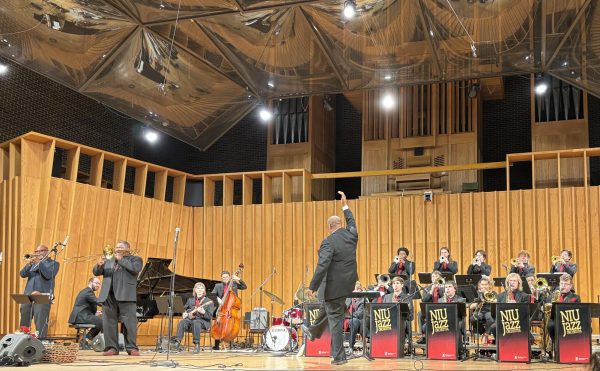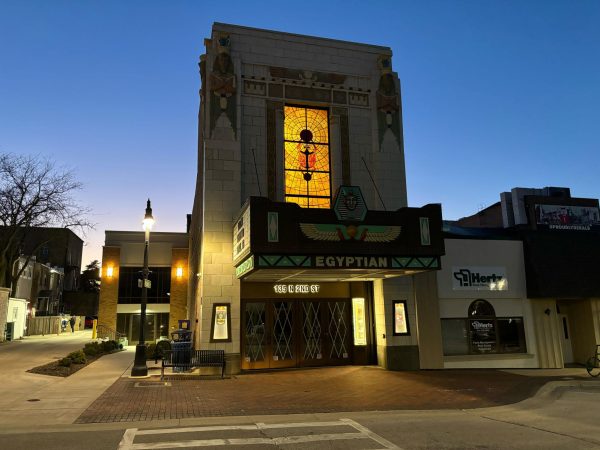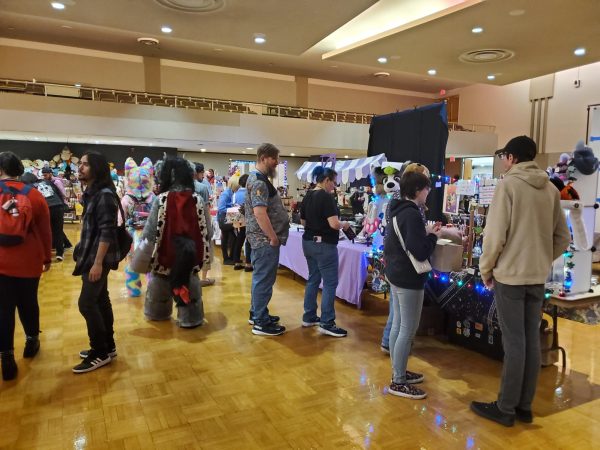Getting ready for the Big Show
October 6, 2005
The process by which a script becomes a play has a trickle down effect, starting in the mind of the playwright, to the director, the set designer and tech director, to the crew, to the actors and then, finally, to the audience.
“The set design and construction process should run like a corporation,” said Ji Youn Maeng, third year MFA set design major. “There’s a concept rooted by the
director and set designer, but every department is involved in realizing that.”
Twelve to 14 weeks before the first performance, the set designer reads the script and talks to the director, taking into account the director’s agenda.
Small models, drawings or even photographic 3D computer renderings can be made to represent the full set according to the director and set designer’s common vision. This is then given to the tech director in charge of set construction.
“3D Studio Max, the program NIU uses in THEA 450, an electronic visualization set design course, is so life-like it convinced a guest Hungarian director three years ago that the set was already constructed while he was still in Hungary,” said Tracy Nunnally, assistant professor and tech director of NIU theater and dance. “When he arrived, he demanded to see his set, but the set didn’t exist outside the computer; he couldn’t believe it.”
NIU theater productions walk a fine line between prestige and apprenticeship. While there is a great deal of importance in the final product – the play – the whole point of the show is the learning process. This is evident in that every theater and dance student must take a stage tech class, THEA 255, demanding 20 hours a week of work in the shop and a completed check-list of 41 carpentry skills.
The TD takes the set designer’s work and makes schematics, fills out order forms for materials and in production meetings, begins conspiring with separate crew areas represented: scenery, props, lighting, costume and sound.
There are only five to six weeks of concentrated set construction, and even with complex jobs in construction, electric, budget or plumbing, the theater world demands self-sufficiency.
“Anyone in theater crew should be able [to] do everything in every trade half as well as a good professional,” said Mike Schafer, a graduate theater major and TD of NIU Fall Dance Concert.
Up to 36 crew members work in the average $2,500 set building process.
NIU theater productions also walk the fine line of budget constraints and necessary expenditures.
Only about 15-20 percent of set material is recycled after a show. While this may seem wasteful, the money and time spent making what may be the same piece over again is justified.
“We don’t save a lot because every member of the crew needs to learn how to make each piece,” Schafer said.
One thing that sets NIU theater crew students apart is the amount of work they do outside NIU,” Nunnally said.
In conjunction with THEA 341, a class focused on rigging – a means of lifting using weights, counter-weights, and ropes or chains – NIU graduate tech directors are the first to be called when the Convocation Center needs rigging jobs.
Nunnally, being one of only a handful of theater
technicians in the country qualified to “fly” actors, is asked to assist in many productions and brings students along. In fact, Nunnally left Sept. 30 for a world-premier of a
re-invented “Peter Pan” in Singapore with theater graduate John Moore and graduated student John Tilford.
“We have the faculty and students to make theatrical mechanisms and extra sets, and theaters outside NIU need them, and that’s how students get experience,” Nunnally said.










